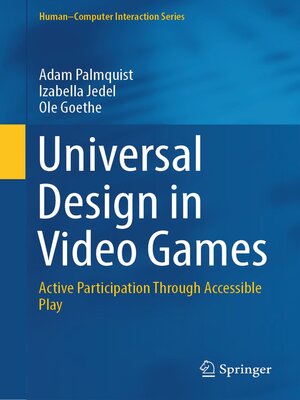Universal Design in Video Games
ebook ∣ Active Participation Through Accessible Play · Human–Computer Interaction Series
By Adam Palmquist

Sign up to save your library
With an OverDrive account, you can save your favorite libraries for at-a-glance information about availability. Find out more about OverDrive accounts.
Find this title in Libby, the library reading app by OverDrive.



Search for a digital library with this title
Title found at these libraries:
| Library Name | Distance |
|---|---|
| Loading... |
As participation in game related activities increases around the world and across a larger part of the population, it is obvious that games are not just an entertainment medium for children or young people. Games can be used to accomplish different purposes for different groups of people in society.
Developing a universal designed game involves more than adding a cast of diverse characters. Games with universal design, at their core, are experiences that are designed from the ground up to be accessible to everyone – through mechanics, options, and user experience.
This book explains the meaning and need for universal design in video games and sheds light on important disciplines. Researchers define a universal designed game as a video game that actively welcomes all players. When players connect authentically with a video game, they're much more likely to engage with the content. Conversely, when players can't physically play a game, or don't see characters that look like them, they feel isolated and miss out on beneficial opportunities to learn and collaborate. Universal design maximizes the impact of playing games, for instance, by ensuring that they're accessible, empowering and representative for every participant.







